Potrebujeme váš súhlas na využitie jednotlivých dát, aby sa vám okrem iného mohli ukazovať informácie týkajúce sa vašich záujmov. Súhlas udelíte kliknutím na tlačidlo „OK“.
ASTM D4555-10
Standard Test Method for Determining Deformability and Strength of Weak Rock by an In Situ Uniaxial Compressive Test (Withdrawn 2019)
Automaticky preložený názov:
Štandardná skúšobná metóda pre stanovenie tvárnosť a pevnosť Slabá horniny in situ jednoosého tlakovom teste
NORMA vydaná dňa 15.1.2010
Informácie o norme:
Označenie normy: ASTM D4555-10
Poznámka: NEPLATNÁ
Dátum vydania normy: 15.1.2010
Kód tovaru: NS-27690
Počet strán: 7
Približná hmotnosť: 21 g (0.05 libier)
Krajina: Americká technická norma
Kategória: Technické normy ASTM
Kategórie - podobné normy:
Zemní práce. Hloubicí práce. Budování základů. Podzemní práce
Anotácia textu normy ASTM D4555-10 :
Keywords:
compression testing, deformation, in situ stress loading tests, Compression testing--rock/related materials, Deformation--rock, Destructive testing--soil/rock, Discontinuities--rock, Field testing--rock, Loading tests--rock/related materials, Rock materials/properties/analysis, Strength, Stress--rock, ICS Number Code 93.020 (Earth works. Excavations. Foundation construction. Underground works)
Doplňujúce informácie
| Significance and Use | ||||||||||||
|
Since there is no reliable method of predicting the overall strength and deformation data of a rock mass from the results of laboratory tests on small specimens, in situ tests on large specimens are necessary, especially if the specimen size required for a given grain size would exceed the size that can be obtained for or tested in a laboratory as stated in Test Method D7012. Such tests also have the advantage that the rock specimen is tested under similar environmental conditions as prevailing for the rock mass. Since the strength of rock is dependent on the size of the test specimen and discontinuities, it is necessary to test several specimens (laboratory or field, or both) of progressively increasing size until an asymptotically constant strength value is found. This value is taken to represent the strength of the rock mass. , Note 1—Notwithstanding the statements on precision and bias contained in this test method; the precision of this test method is dependent on the competence of the personnel performing it, and the suitability of the equipment and facilities used. Agencies that meet the criteria of Practice are generally considered capable of competent and objective testing. Users of this test method are cautioned that compliance with Practice does not in itself assure reliable testing. Reliable testing depends on many factors. Practice provides a means of evaluating some of those factors. The test method is shown only being conducted underground and vertical. However, this test method could be done in a quarry or on the surface if a reaction frame could be set up to behave as a reactive surface in place of a tunnel crown. |
||||||||||||
| 1. Scope | ||||||||||||
|
1.1 This test method covers the measurement of the deformability and strength of large in situ specimens of rock by a uniaxial compressive test. The test results take into account the effect of both intact material behavior and the behavior of discontinuities contained within the specimen block. 1.2 This test method does not cover which type of specimen should be tested or whether anisotropic factors should be considered. The specifics of the test program need to be developed prior to testing and possibly even before sampling. Such specifics would be dependent on the intended use of the data, as well as any budgetary constraints and other factors, which are outside the scope of this test method. 1.3 Theoretically there is no limit to the size of the test specimen; however, size will be controlled by the strength of the test specimen relative to the capacity of any loading apparatus and bearing capacity of the surface the apparatus must react against. Furthermore, the orientation and strength of discontinuities relative to the specimen geometry will be a factor limiting specimen size too. 1.4 All observed and calculated values shall conform to the guidelines for significant digits and rounding established in Practice D6026. 1.5 The values stated in SI units are to be regarded as the standard. 1.6 This standard does not purport to address all of the safety concerns, if any, associated with its use. It is the responsibility of the user of this standard to establish appropriate safety and health practices and determine the applicability of regulatory limitations prior to use. |
||||||||||||
| 2. Referenced Documents | ||||||||||||
|
Podobné normy:
Historická
1.1.2008
Historická
1.5.2012
Historická
1.7.2008
Historická
1.4.2008
Historická
1.7.2010
Historická
1.1.2008
Odporúčame:
Aktualizácia technických noriem
Chcete mať istotu, že používate len platné technické normy?
Ponúkame Vám riešenie, ktoré Vám zaistí mesačný prehľad o aktuálnosti noriem, ktoré používate.
Chcete vedieť viac informácií ? Pozrite sa na túto stránku.


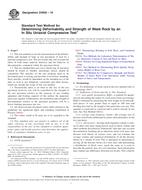
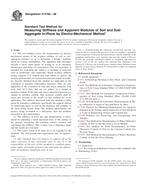 ASTM D6758-08
ASTM D6758-08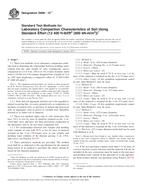 ASTM D698-12e1
ASTM D698-12e1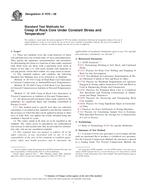 ASTM D7070-08
ASTM D7070-08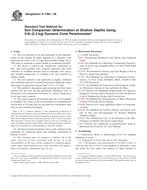 ASTM D7380-08
ASTM D7380-08 ASTM D7383-10
ASTM D7383-10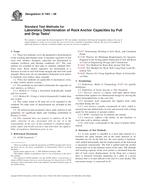 ASTM D7401-08
ASTM D7401-08
 Cookies
Cookies
